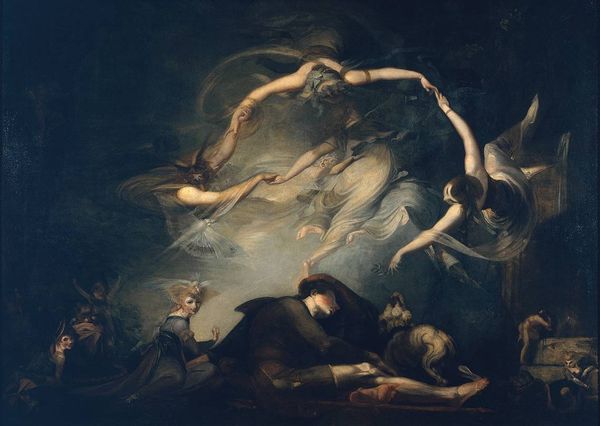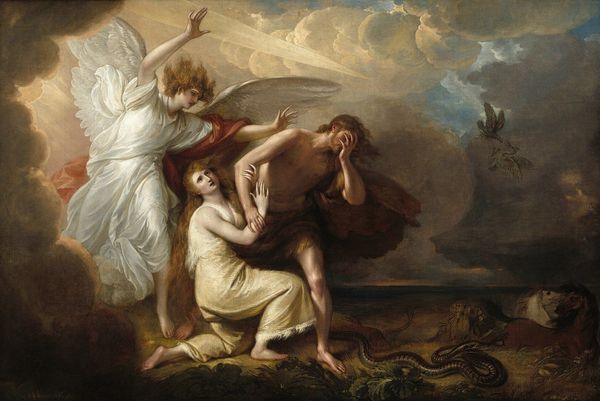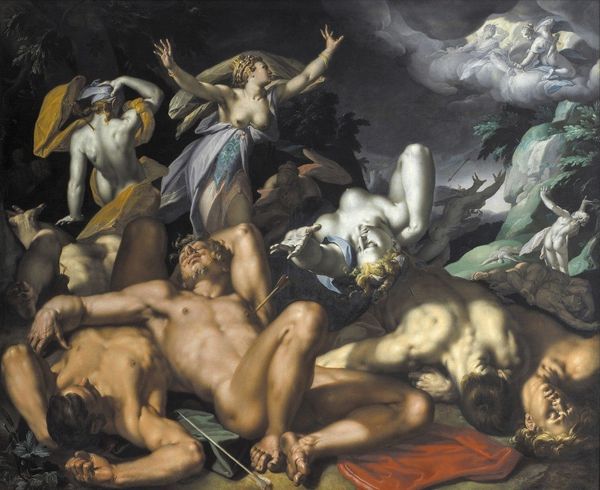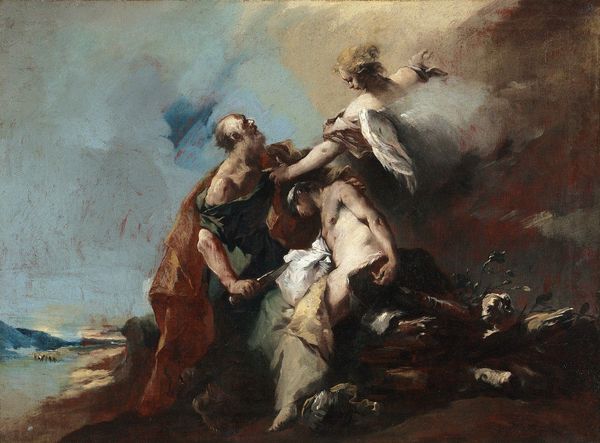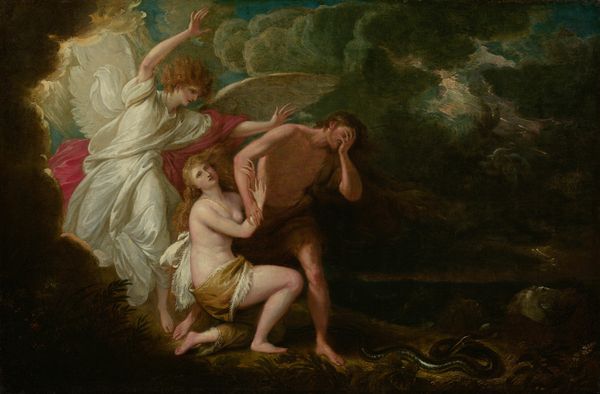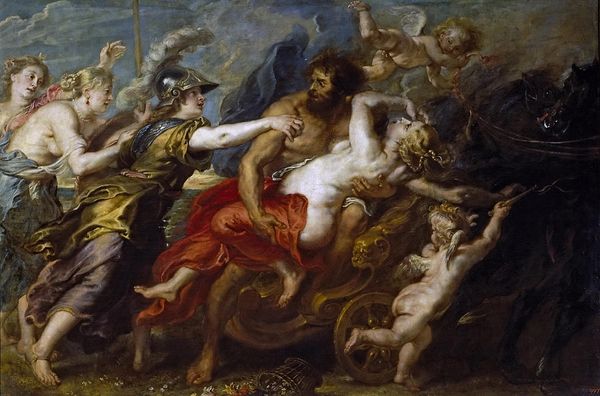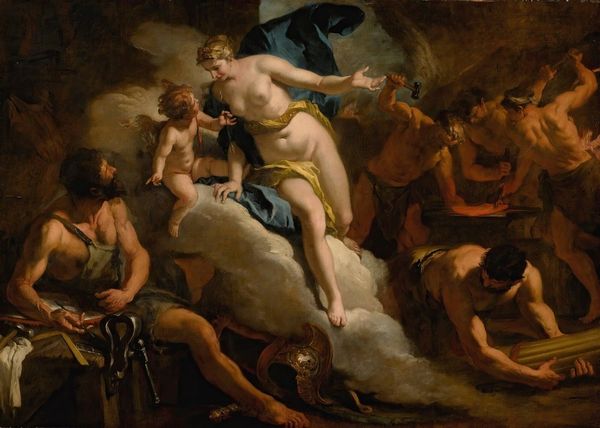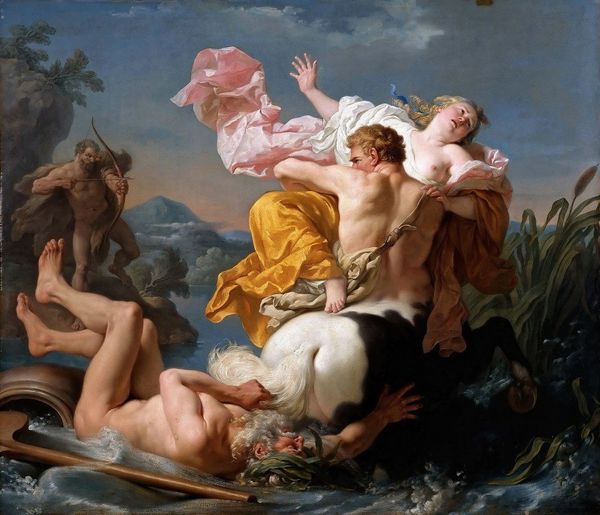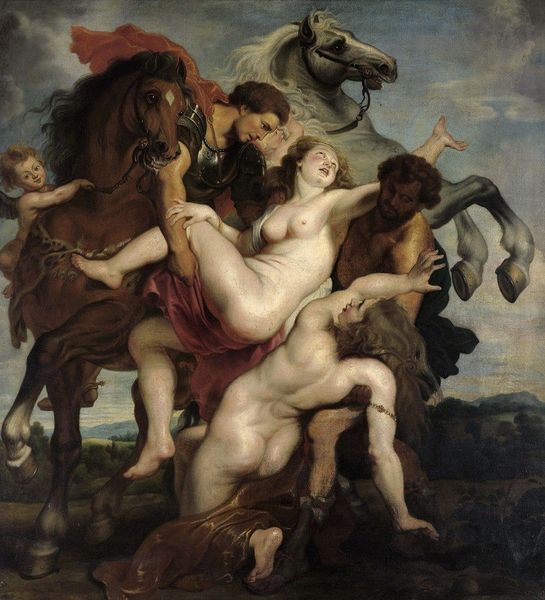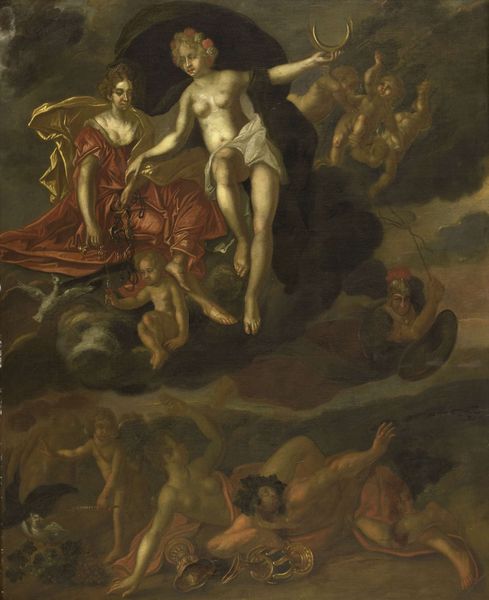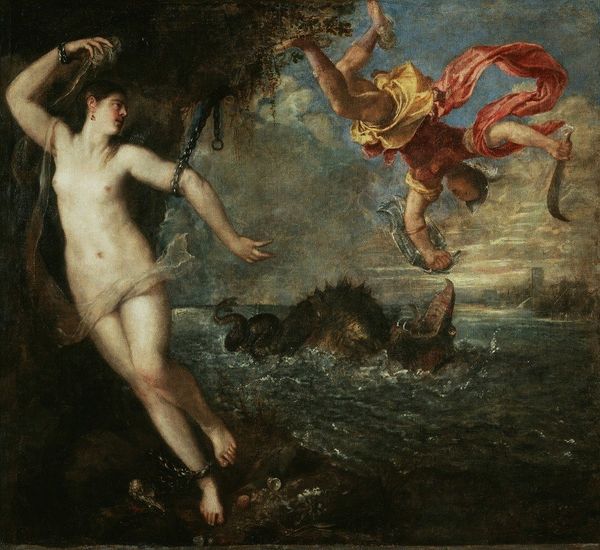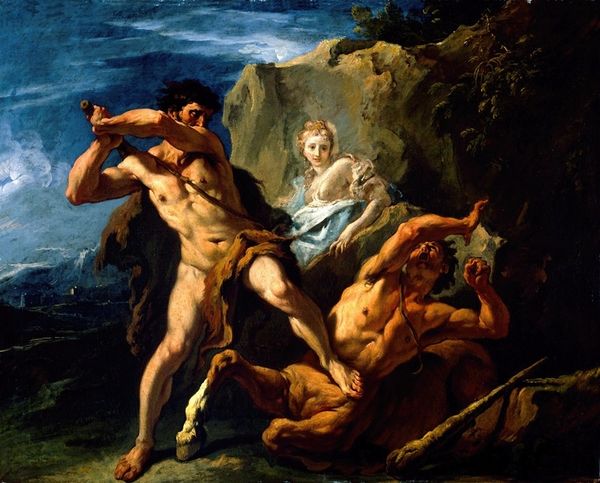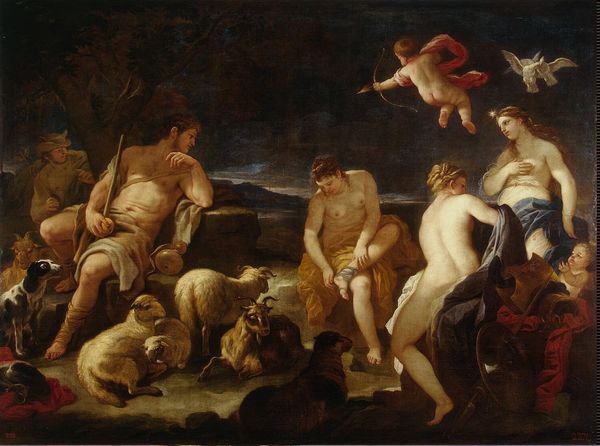
painting, oil-paint
#
allegory
#
narrative-art
#
painting
#
oil-paint
#
landscape
#
figuration
#
oil painting
#
romanticism
#
history-painting
Copyright: Public Domain: Artvee
Editor: Here we have John Trumbull’s “The Last Family Who Perished in the Deluge,” painted between 1838 and 1839, using oil paint. It’s overwhelmingly tragic, a chaotic swirl of figures caught in a moment of absolute desperation. How do you interpret this work, especially in the context of its time? Curator: The Romanticism movement in the early 19th century grappled with intense emotional states and the overwhelming power of nature, which Trumbull’s work certainly encapsulates. But, more profoundly, this deluge speaks to larger narratives of power, culpability, and collective trauma. How does the family unit presented here mirror or challenge dominant social structures of the period? Editor: I see the figures arranged almost in a pyramid, directing my gaze upwards. But the apex isn't triumphant; it's a man pleading, defeated. Curator: Precisely. Consider the visual language employed – the swirling waters, the figures’ dramatic poses. The historical context inflects our understanding. Are we witnessing just a family's demise or a judgement upon humanity? How does the painting's drama position viewers in relation to such profound devastation? Editor: It definitely makes you think about broader themes of morality and divine justice. But isn't there a sense of helplessness, regardless of any moral interpretation? Curator: Absolutely. And perhaps this sense of helplessness is a commentary on societal power dynamics themselves, highlighting how individuals are often at the mercy of forces far beyond their control. What does the absence of divine intervention suggest? Does this absence implicate the socio-political forces responsible for real-world deluges of injustice? Editor: That's a perspective I hadn't fully considered. Thinking about it in terms of contemporary struggles against oppression shifts the focus from purely religious interpretations. Curator: Art has the power to connect these historical moments with contemporary dialogues. By analyzing the painting's visual and thematic elements through an intersectional lens, we gain deeper insights into humanity's ongoing struggles for justice. Editor: Thank you. I will definitely consider the painting through those theoretical frameworks now.
Comments
No comments
Be the first to comment and join the conversation on the ultimate creative platform.
